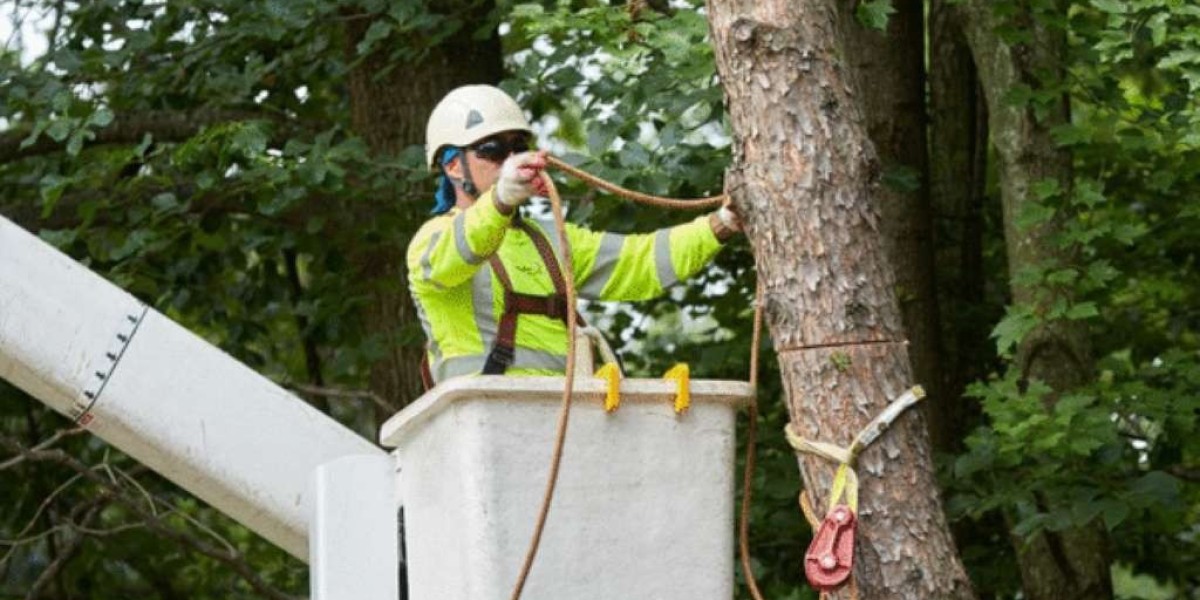Tree removal is one of those things homeowners don’t usually think about—until a tree becomes a real problem. Whether it’s a dead oak in your backyard or a leaning pine threatening your roof, knowing when and how to remove a tree can save you from damage, danger, and disaster.
? What Is Tree Removal?
Tree removal is the process of safely cutting down a tree and removing it from your property. This includes not just the trunk but also the branches and often the stump.
Tree Removal vs. Tree Trimming
Trimming is about shaping or maintaining a tree. Removal is about getting rid of it entirely—roots, trunk, and all (if needed).
? Reasons to Remove a Tree
Dead or Dying Trees
If a tree is clearly dead or dying, it poses a serious risk of falling, especially during storms.
Safety Hazards
Leaning trees, broken branches, or weak roots can be a threat to people, pets, vehicles, and homes.
Property Damage Risks
Tree roots can crack foundations, damage plumbing, or ruin sidewalks. Overgrown limbs can rip off gutters or siding.
Interference with Construction or Renovation
Sometimes, trees block new projects—like adding a pool, driveway, or building an extension.
Invasive Species
Certain trees are considered invasive and can harm native plants or local wildlife.
? When Is the Best Time to Remove a Tree?
Seasonal Considerations
The best time to remove a tree is during the dormant season (late fall to early spring). Trees are lighter without leaves, and surrounding vegetation is less likely to be damaged.
Emergency Situations
After a storm or during pest infestation, you might need emergency removal. Don’t wait—act fast if the tree is a threat.
? Signs Your Tree Needs to Be Removed
Bark is peeling or missing
No leaves during growing season
Deep cracks or cavities in the trunk
Tree leans more each month
Large dead branches fall often
? The Tree Removal Process Explained
Site Assessment
Professionals inspect the tree, its surroundings, and nearby structures. They plan how to safely bring it down.
Tree Felling vs. Crane Removal
Felling: Tree is cut at the base and directed to fall in a safe zone.
Crane: Used when there’s no room to drop a tree safely. Pieces are lifted out bit by bit.
Debris Cleanup and Disposal
Most services will cut and haul away the tree or chip it into mulch on-site.
⚠️ DIY Tree Removal vs. Hiring a Professional
Safety Risks of DIY
Tree removal is dangerous. Falling branches, unstable trunks, and chainsaw accidents are real risks—especially for tall or leaning trees.
Advantages of Hiring Experts
Experience and tools
Licensed and insured
Efficient cleanup
Damage prevention
✅ How to Choose a Tree Removal Service
Certifications and Insurance
Always hire ISA-certified arborists. They should carry both liability and workers' comp insurance.
Customer Reviews and Reputation
Look for consistent 4+ star ratings on Google, Yelp, or Facebook. Word-of-mouth referrals matter too.
Cost Transparency
Get detailed quotes with no hidden fees. Ask if stump removal is included.
? Cost of Tree Removal
Factors That Affect Price
Tree height and width
Condition (dead trees are more dangerous)
Proximity to structures or power lines
Local permits
Price Ranges by Tree Size
Small tree (under 30 ft): $150–$500
Medium tree (30–60 ft): $500–$900
Large tree (60–100+ ft): $900–$2,000+
? Tree Removal and the Law
When Permits Are Required
Some cities require a permit for trees over a certain height or diameter—especially protected species.
HOA and City Ordinances
Always check with your homeowners association and local code enforcement before removing trees.
? What Happens After a Tree Is Removed?
Stump Grinding or Removal
You can grind the stump down to below surface level or fully remove it, roots and all. Grinding is quicker and cheaper.
Replanting Options
Want to replace the tree? Consider native species that require less maintenance and water.
? Environmental Impact of Tree Removal
Responsible Removal Practices
Remove only when necessary
Recycle debris into mulch or firewood
Replace removed trees
Eco-Friendly Alternatives
Sometimes pruning or cabling can save a tree. A certified arborist can offer eco-smart advice.
? Common Mistakes to Avoid During Tree Removal
Hiring unlicensed contractors
Not checking for permits
Leaving the stump behind
Trying to DIY without experience
? Tree Removal Safety Tips
Never remove a tree near power lines without utility approval
Don’t climb large trees without proper gear
Clear the area of pets, kids, and vehicles
Wear protective gear if you're doing minor branch removal
✅ Conclusion
Tree removal is a big decision and even bigger responsibility. Whether it’s a safety concern, a dead tree, or making space for something new, doing it right matters. Always prioritize safety, hire professionals, and follow local regulations. Remember, just because a tree is big doesn’t mean it should stay—especially if it's putting your home or loved ones at risk.
❓ FAQs
1. Is tree removal covered by insurance?
Only if the tree falls due to a covered event (like a storm) and causes damage. Preventative removal is usually not covered.
2. Can I remove a tree without a permit?
That depends on your location. Some areas require permits for protected or large trees.
3. How long does it take to remove a tree?
Anywhere from 1–8 hours depending on the size and complexity.
4. What happens to the wood after removal?
You can keep it as firewood, mulch it, or have it hauled away by the crew.
5. Is stump removal necessary?
Not always, but leaving the stump can attract pests and cause regrowth or tripping hazards.






